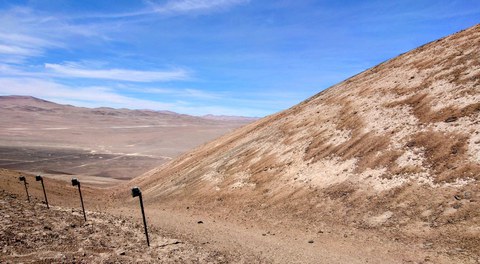08.04.2025
Kameras erfassen „Zebrastreifen“ in der Atacama-Wüste
Wir haben erfolgreich vier autarke und automatische Kameras an jeweils drei verschiedenen Hängen installiert, um in den nächsten drei Jahren täglich (Nicht-)Veränderungen der Erdoberfläche zu erfassen. Der Aufbau und die zukünftige automatische Verarbeitung zu einer Zeitreihe von 3D-Modellen zur Erkennung von Veränderungen ist Teil eines DFG-Projekts unter der Leitung der Universität zu Köln (1,2,3). Dieses Forschungsprojekt zielt darauf ab, das Verständnis geomorphologischer Prozesse in extrem trockenen Umgebungen zu verbessern, indem die Sedimentproduktion und der Sedimenttransport in der Atacama-Wüste untersucht werden, wobei der Schwerpunkt auf interessanten Landformen, den so genannten „Zebrastreifen“, liegt. Das Projekt kombiniert Feldarbeit und Überwachung mit Datierungstechniken, um diese Landformen zu analysieren. Die Ergebnisse werden das Wissen über die Landschaftsentwicklung, die Auswirkungen des Klimas auf Trockengebiete und sogar die planetarische Geomorphologie erweitern, da die Atacama-Wüste als das der Erde am nächsten liegende Analogon zum Mars gilt.


